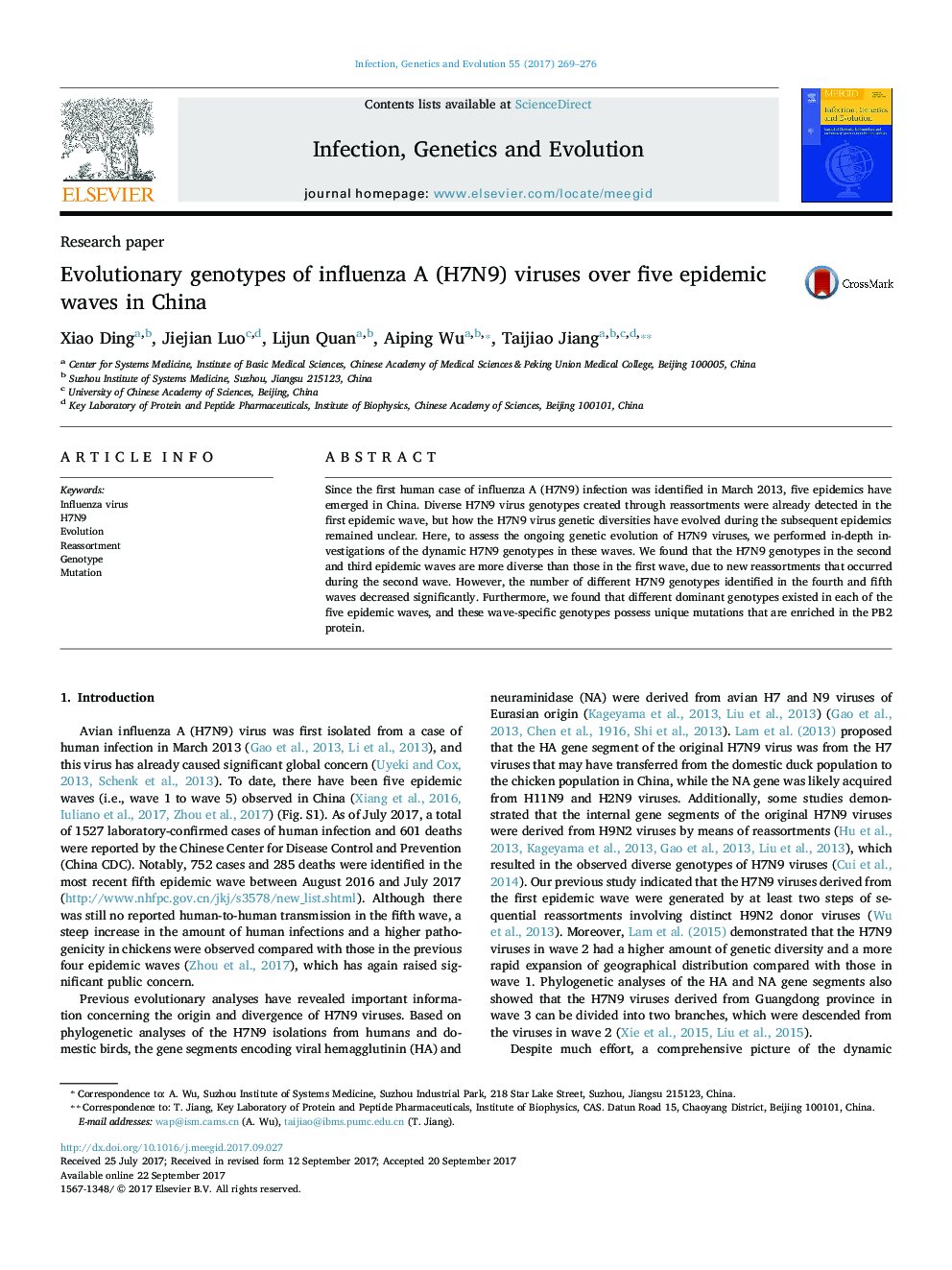| Article ID | Journal | Published Year | Pages | File Type |
|---|---|---|---|---|
| 5590372 | Infection, Genetics and Evolution | 2017 | 8 Pages |
Abstract
Since the first human case of influenza A (H7N9) infection was identified in March 2013, five epidemics have emerged in China. Diverse H7N9 virus genotypes created through reassortments were already detected in the first epidemic wave, but how the H7N9 virus genetic diversities have evolved during the subsequent epidemics remained unclear. Here, to assess the ongoing genetic evolution of H7N9 viruses, we performed in-depth investigations of the dynamic H7N9 genotypes in these waves. We found that the H7N9 genotypes in the second and third epidemic waves are more diverse than those in the first wave, due to new reassortments that occurred during the second wave. However, the number of different H7N9 genotypes identified in the fourth and fifth waves decreased significantly. Furthermore, we found that different dominant genotypes existed in each of the five epidemic waves, and these wave-specific genotypes possess unique mutations that are enriched in the PB2 protein.
Related Topics
Life Sciences
Agricultural and Biological Sciences
Ecology, Evolution, Behavior and Systematics
Authors
Xiao Ding, Jiejian Luo, Lijun Quan, Aiping Wu, Taijiao Jiang,
